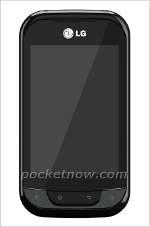In recent times, with the mobile internet boom, mobile users have shifted their focus towards devices like BlackBerry and Android. BlackBerry, due to its dedicated push email functionality, has gained tremendous popularity over other smartphones and has become really popular amongst email and mobile Messaging users.
Individual users, apart from even bigger organisations, have also adopted BlackBerry devices as default mobile communication devices for email messaging solutions.
BlackBerry has six different devices presently in the Indian market targeted at different users like the Blackberry Curve is primarily targeted at casual users comprising mainly of youth while for more serious business users Blackberry Bold 3 is there which offers better enterprise mail based features as compared to the Curve. Along with a user specific focus, the devices also have a price centric approach as well.
Today a Blackberry device can be owned for as low as Rs 9,500 for the Blackberry curve and the price point goes as high as Rs 27,000 also with devices like the Torch. So with such a varied price point offering BlackBerry devices cover a whole range of consumers.
Also, owing to the high demand and rising popularity of the BlackBerry devices, almost all telecom service providers today are offering special tariff plans for such users.
Postpaid Tariff offerings
To cover the whole gamut of users using BlackBerry devices, major telecom companies Including Airtel, Aircel, Idea, Tata Teleservices, RCom, BSNL and MTNL are offering lucrative postpaid plans, which can be divided into three main categories.
The cheapest in the postpaid category is the Rs 299 plan which offers users unlimited access to BlackBerry Mail and Blackberry Messenger services.
Although this plans offers nothing incredibly out of the box but many users have opted for this as a simple means to get services on their devices. Airtel, Idea, Vodafone, BSNL, Tata Indicom, Tata Docomo and RCom are the major operators who are offering this plan as of now.
Under the Unlimited Internet plan for Rs 599, most operators offer benefits of the above mentioned plan plus unlimited Internet access, which can only be accessed on a BlackBerry device and not via any laptop.
Under the unlimited plan, BSNL has the cheapest offering Rs 362 for 2G data and also offers a Rs 499 plan that includes 2GB of 3G data also.
The second cheapest plan is offered by Tata Docomo for Rs 399 per month. Operators like Idea, Airtel and RCom offer this plan for Rs 599. Then there are limited data plans from MTNL and Aircel, both priced at Rs 499 but only MTNL is offering 2GB of free data whereas Aircel is offering a meagre 500KB of free data. RCom in GSM offers the most expensive plan priced at Rs 1,099 for a month’s usage.
Lastly there is the Enterprise user plan that includes access to enterprise email along with other services like messenger and unlimited internet. Airtel, Idea, RCom, Vodafone offer this plan at Rs 899 per month whereas MTNL offer cheapest enterprise plan at Rs 699 for 2G with an option of Rs 1,199 for unlimited 3G data as well.
But, Airtel offer 2GB of off device data usage per month for Rs 899 as well. Both Aircel and BSNL offer this plan at a standard but slightly higher price than rest of Rs 999.
Operator | BlackBerry Postpaid Tariffs | ||
Email/ BlackBerry Messenger (Unlimited plan in Rs) | Email/BBM/Browsing (in Rs) | Email/BBM/Browsing + Enterprise mail access Browsing (On BlackBerry device only in Rs) | |
| Airtel | 299 | 599 | 899 ( additional 2 GB off device usage) |
| Idea | 299 | 599 | 899 |
| Vodafone | 299 | 899 | 899 |
| Tata Indicom | 299 | 900 | |
| Reliance | 299 | 599 | 899 |
| MTNL | 499 (2GB data limit) | 1199 (3G) | |
699 (2G) | |||
| Aircel | 499 (limit 500KB and after that 10p/10kb browsing will be charged) | 999 | |
| BSNL | 299 | 362 (2G) | 999 |
499 (for 3G data limit is 2 GB) | |||
| Reliance GSM | 299 | 1099 | 899 |
| Tata Docomo | 299 | 399 | – |
Prepaid tariff offerings
Most telecom operators like Airtel, Vodafone, RCom, Tata Docomo and Idea have offerings for prepaid users as well. Aircel and Tata indicom do not offer prepaid service for BlackBerry devices.
The prepaid plans are almost identical to that of postpaid schemes. For prepaid, however, the choices are fewer.
BSNL boast the cheapest plan under this category at Rs 271 per month for which users can use the email and BBM facility. Airtel, Idea, and Tata Docomo offer the same benefit for Rs 299.
Almost every service provider including Airtel, Vodafone, RCom, Tata Docomo and Idea offer services (email, BBM, Browsing) for Rs 399 per month. MTNL is the only operator that had a data limited plan with 2GB free data for Rs 499 per month.
For enterprise customers, the choice in prepaid is slim as only Airltel and BSNL offer enterprise service that too priced at Rs 899 and Rs 898 respectively.
So, as we said earlier, today options are pretty limited and the user has to decide and differentiate between the need and the want. Because everything that is available comes with a price tag.
Operator | BlackBerry Prepaid Tariffs | ||
Email/ BlackBerry Messenger (Unlimited plan in Rs) | Email/BBM/Browsing (On BlackBerry device only in Rs) | Email/BBM/Browsing / Enterprise mail access (On BlackBerry device only in Rs) | |
Airtel | 299 | 399 | 899 |
BSNL | 271 | 399 | 898 |
Idea | 299 | 399 |
|
Tata Docomo | 299 | 399 | – |
MTNL | – | 499 ( 2GB data download limit) | – |
Vodafone | – | 399 | |
Reliance GSM | – | 398 | – |
Reliance CDMA | 398 | ||



 Certainly LG would like to reap on the Optimus One’s popularity with its successor dubbed as LG Univa that will sport 3.5-inch HVGA display. The LG Univa may feature an 800
Certainly LG would like to reap on the Optimus One’s popularity with its successor dubbed as LG Univa that will sport 3.5-inch HVGA display. The LG Univa may feature an 800  As Captain America, players need to use the unbreakable shield to maneuver through the attacks and even block them. Packing 24 levels, the game spans around three massive episodes with hidden areas to be discovered. For the achievers, Marvel has also offered number of unlockable items.
As Captain America, players need to use the unbreakable shield to maneuver through the attacks and even block them. Packing 24 levels, the game spans around three massive episodes with hidden areas to be discovered. For the achievers, Marvel has also offered number of unlockable items.